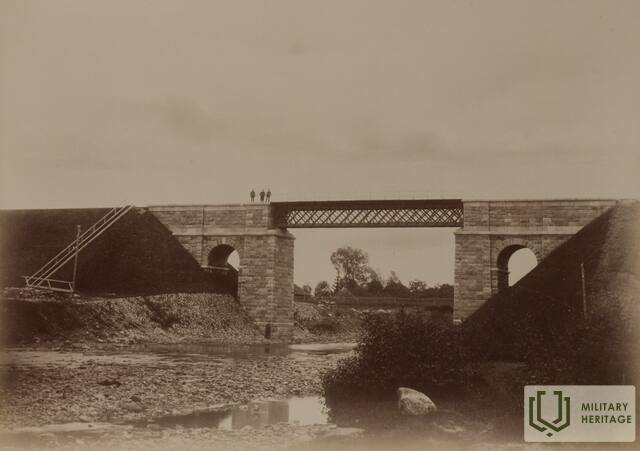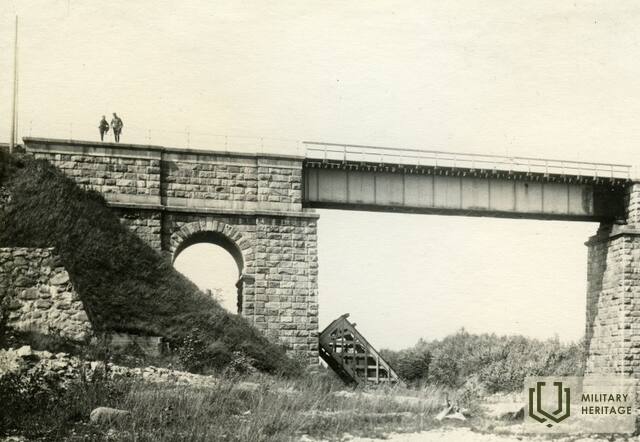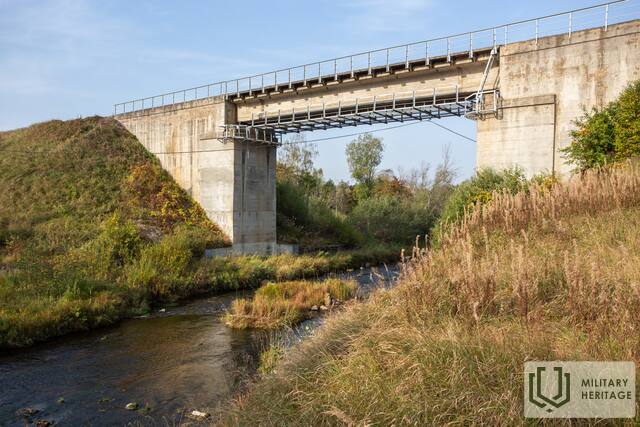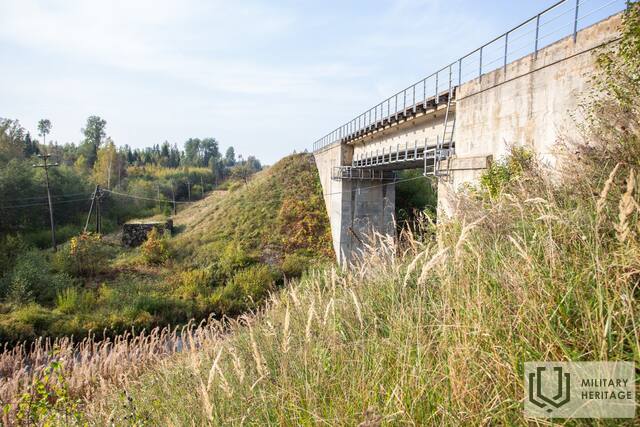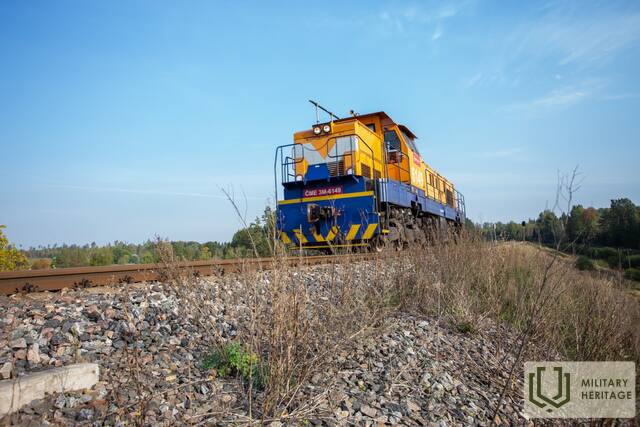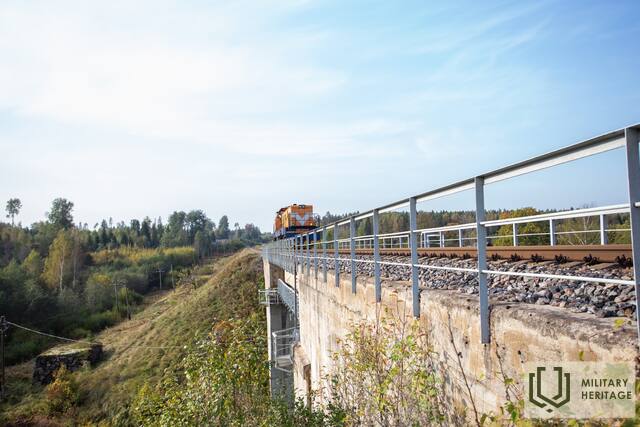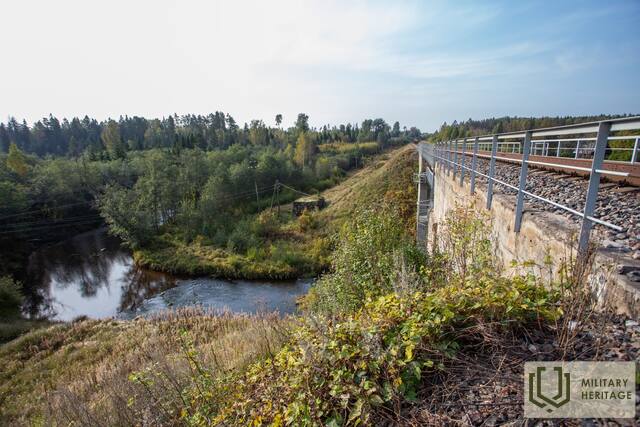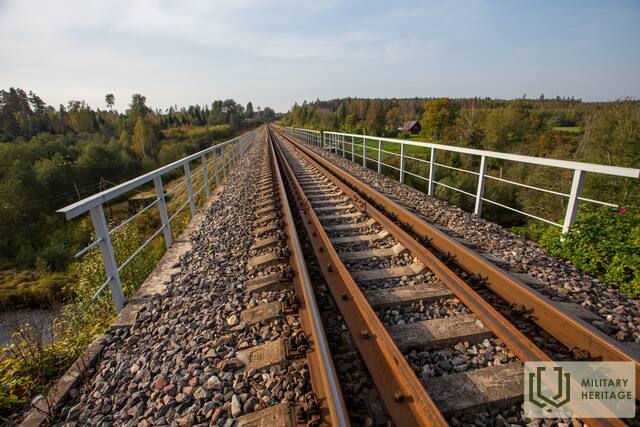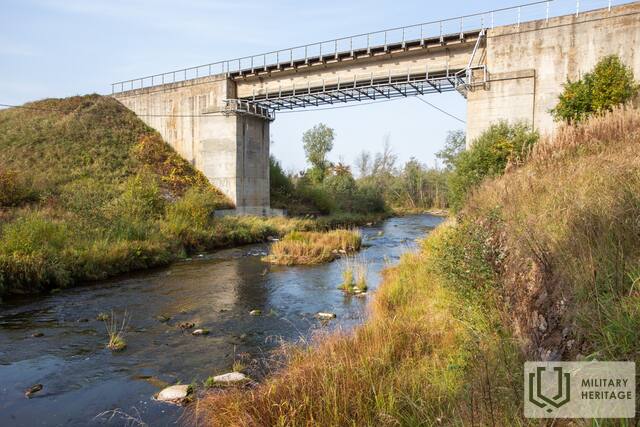Railway bridge over Amata Infrastructure


 86
86



Located in Drabeši parish, Cēsis region, near the recreation area "Meža koujas".
A railway bridge over the Amata River is visible.
The railway bridge over the Amata River plays a very important role throughout the course of the War of Independence, as the first battle between the Estonian army's armored trains and the Baltic Landeswehr units took place here on June 5, 1919. The Landeswehr, knowing that the armored train was approaching, mined the railway bridge and took up positions in the "Amata" houses on the riverbank, ready for possible hostilities. The bridge over the Amata River was the border between the Estonian forces and the Germans.
Historical evidence of the events at the Amata Bridge has not been preserved. Since Latvians did not participate in these events, there are no memoirs from them, there are memories from Estonian soldiers, other sources. It can be said that this was a joint Estonian-American battle against the Landeswehr, because an American officer was on the Estonian armored train, who later also fought in World War II. In general, many future officers and commanders of World War II participated in the Cēsis battles, especially on the German side.
The Estonian armored train arrived in Cēsis on June 2, 1919, and a day later went to Ieriķi, where negotiations with the Landeswehr took place, which were fruitless, and on June 5, when the armored train again approached the Amata Bridge, a clash with the Germans began. The armored train also took part in the battles near Cēsis a day later, where it helped the soldiers of the Schoolchildren's Company, who were threatened with encirclement. Although the Germans tried to dismantle the tracks to cut off the train's retreat, it managed to retreat across the Rauna Bridge.
On the night of June 23, 1919, during the Battle of Cēsis, the Landeswehr abandoned Cēsis and retreated to the Amata River. While retreating, the Germans burned down the Cēsis Latvian Society building and blew up the bridge over the Amata.
Used sources and references:
http://edruva.lv/vieta-kur-sakas-cesu-kaujas
https://www.la.lv/vieni-no-latvijas-neatkaribas-aizstavjiem-dzelzcela-apsardze
Related timeline
Related topics
Related stories
The Battle of Cēsis on the banks of the Amata River
At the bridge over the Amata, the German Landeswehr attacks an Estonian armored train that has arrived for negotiations. The Estonians open counterfire, the Germans are repulsed, and the armored train returns to Cēsis.
The beginning, course and conclusion of the Battle of Cēsis
The victory in the Battle of Cēsis was destined to become a turning point in the Latvian and Estonian struggle for the independence of their country. This victory put an end to the plans of the Andrievs Niedra government and the German general Rüdiger von der Goltz to conquer the Baltics. Instead, the Latvian Provisional Government of Kārlis Ulmanis resumed its activities in Liepāja.
Battle at the bridge over Amata River
The Battle of Cēsis is one of the most significant stages of the Latvian War of Independence and also occupies a significant place in the history of the Estonian War of Independence.




